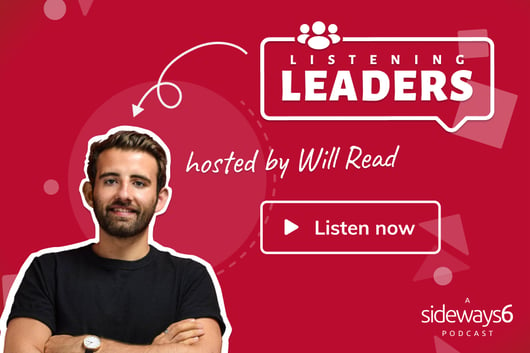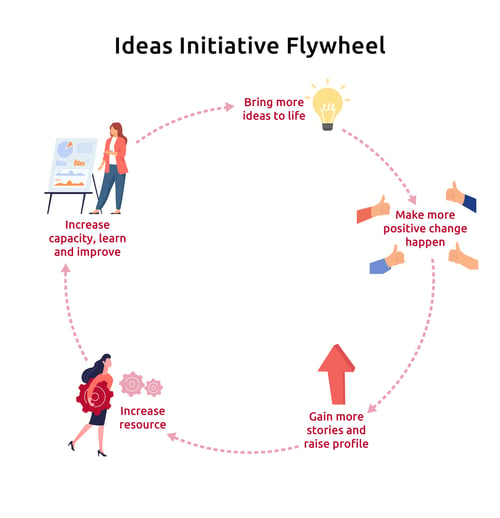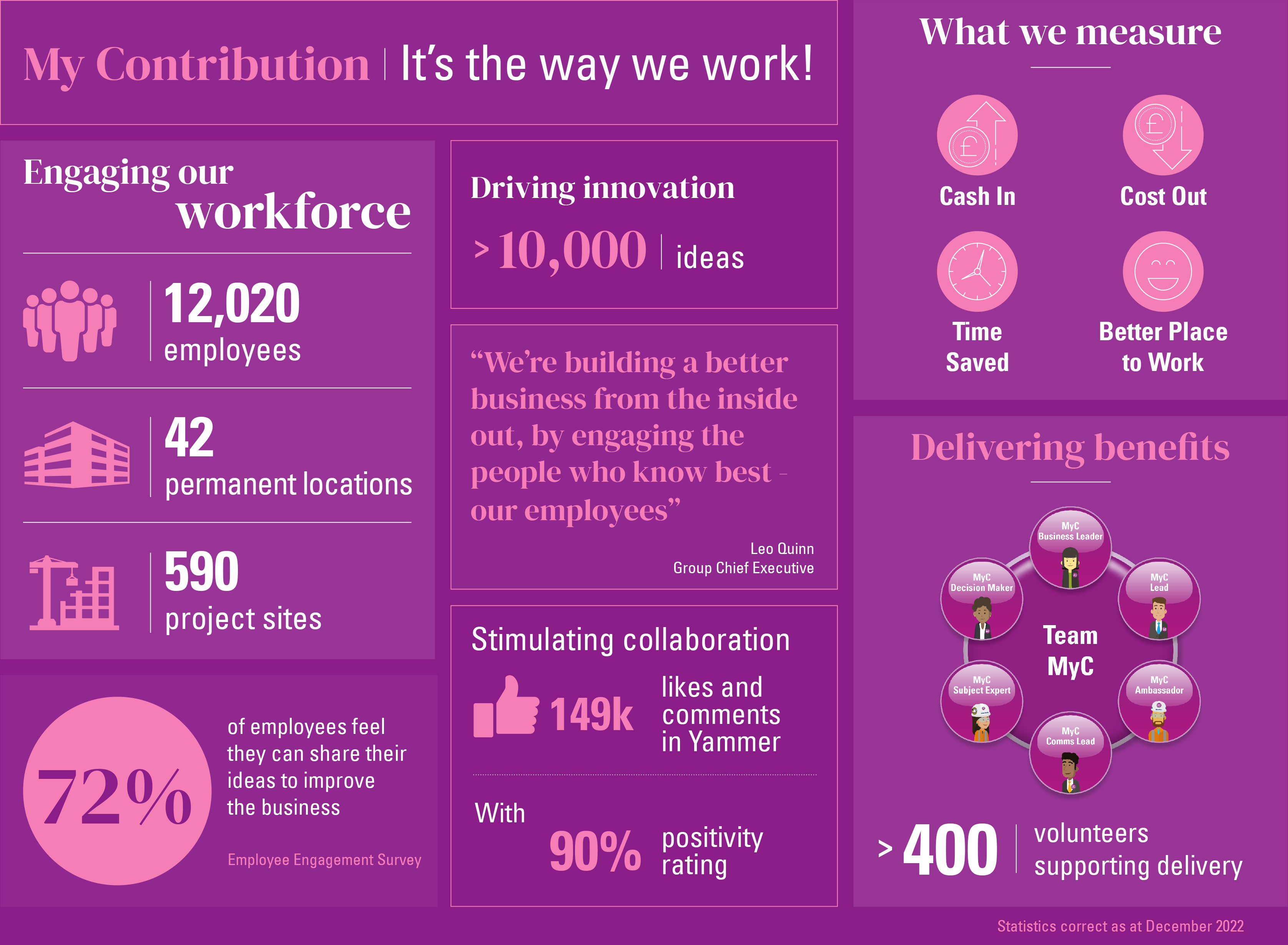+
Get in touch 👋🏽
We would love to hear from you.
Contact us to see how we can help.
We would love to hear from you.
Contact us to see how we can help.

Every organisation, it seems, agrees that employee engagement is important. But too few companies are drilling down into what it actually looks like, and how it differs from employee satisfaction. This lack of focus is holding back people, productivity, and ultimately, profits.

Employee engagement is more than just a buzzword or an HR metric, and it isn’t the same thing as employee satisfaction. An employee can show up to work, do their job, leave at 5pm, and be satisfied with their work without being actively engaged in the workplace.
Employee satisfaction is a one-way street, in which workers are solely interested in what their workplace can do for them. Employee engagement works both ways, when the two parties collaborate as a partnership to achieve company goals.
Plus, an employee’s ‘happiness’ alone tell us nothing about their level of engagement or work-related behaviour. Consider, for example, that a whopping 85% of employees claim to not be engaged in the workplace, but 74% of employees globally are satisfied with their jobs.

Employee engagement is a multi-faceted, complex metric, and having a deep understanding of it can be the difference between your business thriving or flopping. That’s because having a disengaged workforce stalls innovation, slows productivity, and increases turnover rates.
In this article, we’ll see how you can prioritise engagement and the benefits that this approach promises. Let’s dive in!
Engagement often takes the top spot on the list of a company’s priorities, but a lack of understanding of what it really is can lead organisations in the wrong direction. The priorities are right but the approach is wrong, with companies turning to changes to the working environment as a solution to poor engagement.
This approach leads companies to spend huge chunks of their annual budget on rewards programmes and office revamps, when in actual fact, rewards and bonuses don’t drive engagement. Instead, studies have cited factors such as active listening from leadership as more accurate predictors of employee engagement than salaries.

Not to mention that if your company dangles the same carrot as every other business, you won’t stand out from the crowd when it comes to recruiting or retaining staff. By assuming that wellness benefits, bonuses, and flexible work arrangements are enough for a complete engagement strategy, you fail to differentiate yourself from all the other organisations doing the exact same thing.
When people are financially invested, they want a return. When people are emotionally invested, they want to contribute.
----- Simon Sinek -----
To take a holistic approach that goes beyond just the working environment (health and safety, well-designed workspaces, etc.), consider the following needs in your employee engagement landscape:
Don’t simplify employee engagement to a straightforward input/output, e.g. annual bonus = more engagement. Instead, recognise that your workforce has complex and varied needs that you’ll need to understand in order to boost engagement in the long term.
Employee engagement is at an all-time low. With just 21% of workers claiming to be engaged at work, this lack of engagement represents a huge risk to businesses.
Engagement doesn’t just affect employee well-being; it can have a knock-on effect on your organisation. When engagement is poor, this affects factors like turnover rate, leading businesses to waste resources on recruitment or ineffective engagement programmes in an attempt to attract and retain talent.
In fact ...
Employees who are not engaged or are actively disengaged cost the world economy a whopping $7.8 trillion in lost productivity. – Source: Gallup
Here’s the good news—this risk is easily mitigated. The problem isn’t that effective employee engagement methods don’t exist, it’s that companies don’t know about them.
Enter: ideas programmes.
Ideas programmes are one of the most effective ways for any organisation to implement employee engagement whilst driving business growth. With the right tools and support, they can be transformational.

A hallmark of the most successful companies is a listening culture, one in which ideas that employees contribute are not only listened to, but actively implemented.
Ideas programmes are a way for people to feel heard while contributing to corporate success. These programmes aren’t just a way to better engage employees, but they can boost profits too, with the unique insights from employees contributing to the financial success of an organisation. Your business can collect ideas for things that matter to you and your long-term goals, as well as changes your employees want to see.
This strategy promises true employee engagement—a workplace in which employees aren’t just happy, but actively invested in the future success of the business. It’s not just your employees who will benefit either, with increased engagement driving innovation, profitability, and cost savings.
Nowadays, people switch jobs more than ever, with 82% of workers prioritising working for a company that has a purpose. Considering the cost to replace an employee can be anywhere from one-half to two times their salary, this frequent turnover is not good for businesses’ bottom lines.
It’s bad for morale, too. When staff leave, it can prompt other employees to look elsewhere for work, leading to a mass exodus of staff. Not to mention that having to constantly train new employees can negatively impact productivity.
That’s where employee engagement comes in. Put simply, employees who are more engaged at work are less likely to quit. And companies that provide employees with mutually beneficial working relationships are shown to be more likely to hold on to staff.
It’s not a huge surprise that management teams and CEOs often report higher engagement than staff members in more junior roles. After all, these employees have less of a stake in the business and possibly don’t share the same vision for the company’s impact on the wider world. This can be especially true in organisations that don’t encourage employee ownership of company goals.
But executives are actually becoming more engaged at work, whilst employee engagement stagnates. This trend leads to a divide in the workplace, in which executives not only feel more invested in the organisation’s success, but also express frustration at the perceived lack of engagement from the rest of the workforce.

This partly stems from executives potentially gaining more from a company’s financial success, but it mostly results from individuals feeling they have less control over the workplace, or that their ideas aren’t heard. With ideas programmes, you can redress this balance by making sure the voice of every staff member is heard, no matter how junior or senior their role.
High productivity means high profits, and the reverse is true for low productivity, which loses companies trillions of dollars a year worldwide, and also causes companies to stagnate.
When productivity is low, so is innovation, leading to a workplace with stale ideas, dwindling profits, and a lack of ingenuity.
Engagement works in direct correlation with productivity: research shows that engaged employees are 27% more productive than their disengaged counterparts. Profits benefit too, with highly engaged teams showing 21% greater profitability.
And it’s not just quantity, but the quality of work can improve, too. A study found that engaged employees make 60% fewer mistakes than disengaged employees, and are more likely to have pride in their work. If you want a workforce that produces more and does it better, employee engagement is key.
Innovating once isn’t enough. When Steve Jobs created the iPhone, his work revolutionised the world of technology. But putting his feet up and sitting back wasn’t an option because competitors began to imitate this innovation, forcing Apple to innovate once again. The same goes for any business.
The way to stay ahead of the curve is to embed a culture of ideas at the heart of your organisation, authentically valuing your employees and making them feel heard. The most successful leaders have the humility to acknowledge that employees know your business inside out, and can be some of the best people to advise on how to improve it.
 Since many of their roles involve the day-to-day running of the organisation, they know their jobs better than anyone (including leadership), which means they’ll have effective ideas on how to streamline processes and maximise efficiency.
Since many of their roles involve the day-to-day running of the organisation, they know their jobs better than anyone (including leadership), which means they’ll have effective ideas on how to streamline processes and maximise efficiency.
Your employees don’t need encouragement to think strategically—they already do. The difference is that they need a medium through which they can express these ideas.
Plus, many junior-level staff interact regularly with customers or other businesses, meaning they’re the direct line for feedback about your business. This feedback can be used to innovate, improve, and push the company forwards.
Effective leadership isn’t just needed to create engagement, but it’s also a consequence of it. Leaders can learn from listening to the ideas of their employees and can use ideas programmes to build a transformational leadership presence in their organisation.
When employees feel listened to by executives and leaders, it creates a sense of investment in company decision-making. In turn, this helps employees to come up with even more great ideas for their companies. Having ideas is one thing—installing a listening culture that ensures employees feel comfortable sharing them is the next level.

Employee engagement can also help to turn junior employees into more effective leaders, priming them for future leadership roles in the organisation. By being part of a company’s strategic vision, employees can improve their leadership abilities and professional development opportunities, promising a future pool of leaders to ensure the company’s longevity. After all, a listening approach is the hallmark of successful leaders.
Ideas programmes are one of the most powerful tools at any organisation’s disposal for boosting that all-important engagement rate. But launching one of these programmes at scale is no mean feat, and it certainly can’t be just lip service.
Failing to instil a culture where employee engagement is authentically at the heart of your business strategy can result in further alienation, disengagement, and poor employee retention.
Imagine you spend hours giving advice to a friend, only for them to take the opposite approach. You’re probably unlikely to invest too much time in advising them again. The same goes for work.
With this in mind, companies must learn to put their money where their mouth is. If employees contribute ideas but don’t see any meaningful action as a result of their feedback, they’re unlikely to contribute again.
At the centre of any ideas programme must be a commitment to follow through on those ideas, which should be made as simple as possible for the programme facilitators.

The most straightforward way to automate ideas programmes is by using specialised software that takes care of consistent follow-ups and communications with employees. That way, there’s always a steady flow of communication between employees and the leadership without taking away from the organisation’s valuable time or resources.
Employee ideas can save businesses millions while reducing tens of thousands of man-hours. Don’t just take our word for it—look at how infrastructure giant Balfour Beatty engaged their workforce by listening to employee ideas and underwent a revolution.
Together we are building a stronger business from the inside out. So, when it comes to identifying ways of improving our business, who better to ask than all our people?
----- Leo Quinn, CEO @ Balfour Beatty -----
One employee suggested a new drainage solution that saved £185,000 alone, while more than 10,000 staff ideas came together to create a more productive, happier, and ultimately more profitable workplace.
With the help of Microsoft Viva Engage, Teams, and Sideways 6, Balfour Beatty enabled employees to submit their ideas, which were broken down into hashtags to indicate subject areas. More than 400 volunteers took up roles to help facilitate the project, with effective leadership ensuring that many of these ideas were put into motion.

The results were truly epic, with more than £22 million of costs and over 343,000 hours saved.
Employee engagement has to be woven into the fabric of a company, and media company Discovery certainly understood the assignment when they increased employee engagement by implementing a culture of ideas.
Using Workplace from Facebook integrating Sideways 6, Discovery allowed employees to post ideas, then used Sideways 5’s chatbot to prompt more details, with questions such as ‘How many resources do you need?’.
It's always a challenge finding needles in hundreds of haystacks. With Spark Innovation we can find these gems–and to our pleasant surprise, the quietest offices, traditionally with the least power, are submitting the most ideas.
----- Stephen Lee, VP EMEA Portfolio Strategy and Innovation @ Discovery -----
Discovery prioritised seamless integration with the tech they were already using, making submitting ideas a frictionless process for employees. The result? Increased productivity and ideas for better working conditions leading to a more inclusive workplace. Plus, a whopping 76% of employees now feel that their ideas are heard at work.
With employee engagement leading to 23% higher profitability and 43% lower turnover, there’s never been a more important time to prioritise this vital workplace metric.

Employee engagement can make or break a company’s success, and there’s no quick-fix solution that doesn’t involve a deep and far-reaching understanding of your employees’ needs.
The good news? With a robust ideas programme and the right technology to successfully implement it, organisations can revolutionise their approach to employee engagement and create a workforce that’s authentically invested in their workplace’s success.
Ready to level up your company’s employee engagement strategy and see profits soar? Contact us today to find out how.
Ideas from Anywhere™
Sideways 6 exists to help bring good ideas to life every day, everywhere from everyone.
»